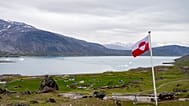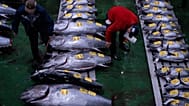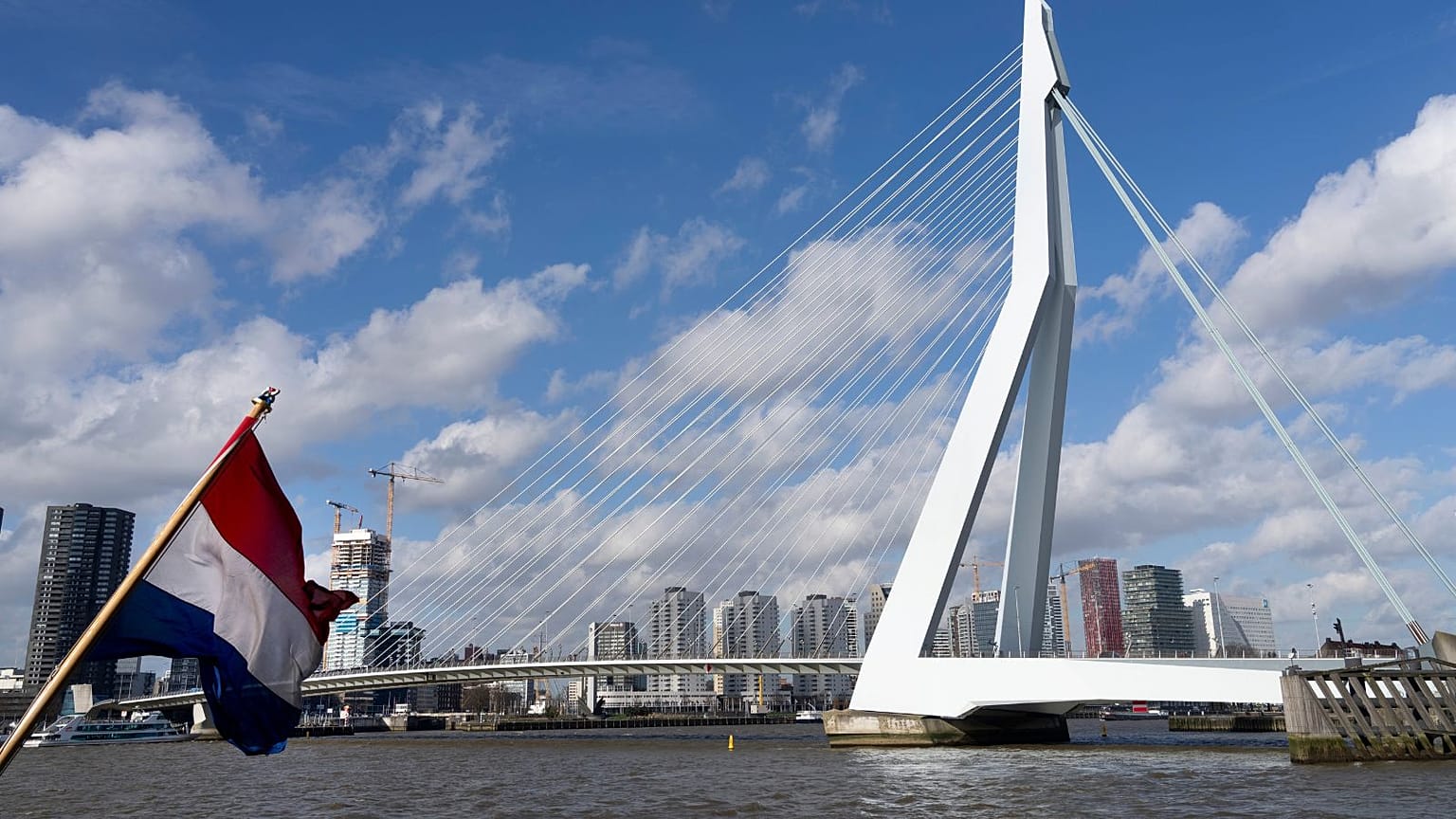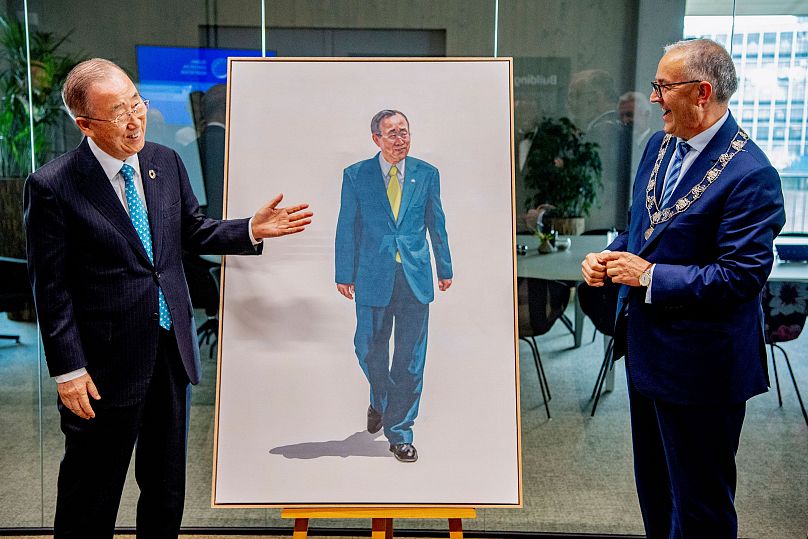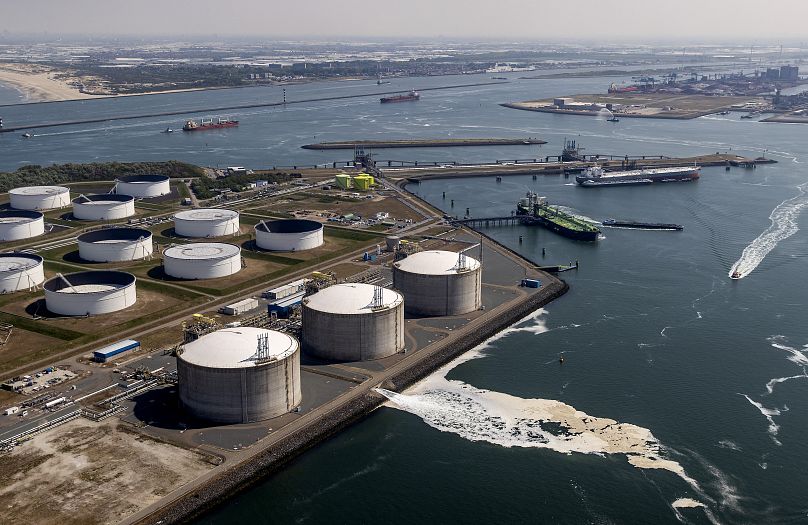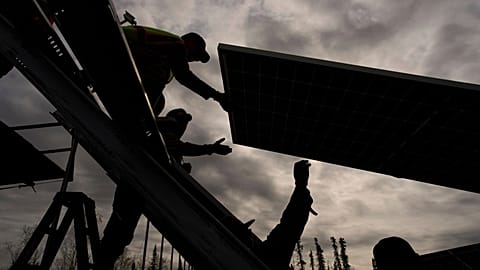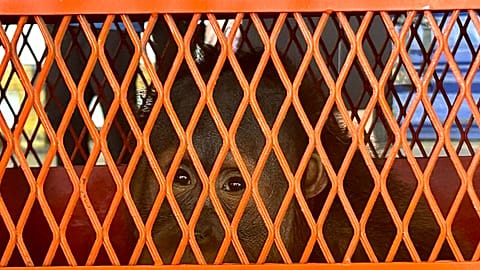The Dutch city is world famous for protecting itself from flooding. How is Rotterdam exporting its water solutions abroad - and why?
Despite its precarious position by the North Sea, Rotterdam is seen as one of the safest delta cities in the world.
From the storm surge barrier Maeslantkering to floating offices, Rotterdam has designed many solutions to protect its citizens against flooding and climate change.
These solutions have another, lesser-known function: boosting the Netherlands’ ‘water diplomacy’ efforts and bringing business to Dutch engineering firms.
The city’s water expertise found its way to the COP28 climate conference in Dubai last week, where Rotterdam’s mayor Ahmed Aboutaleb met other city representatives.
We spoke with the mayor to understand more about the city’s strategic goals for water management.
Why is Rotterdam a water pioneer?
“Water management is a necessity in Rotterdam,” Aboutaleb explains. “85 per cent of the city lies up to seven metres below sea level. Rotterdam needs to adapt and invest in order to ‘survive’ and in this context, we highly value international knowledge exchange.”
The most notable of such knowledge exchanges is the C40 cities network. Mayors of nearly 100 cities share best practices for cutting emissions and protecting communities against the impacts of climate change.
In November 2023, the network established the ‘Water Safe Cities Accelerator’. 16 cities, including Rotterdam, Buenos Aires and New York, pledged to protect their most vulnerable communities from flooding and drought by 2027 via comprehensive early warning systems and robust emergency response plans.
Within C40, Rotterdam leads the delta cities network, which focuses specifically on solutions for geographically exposed cities. Mayors discuss water management issues such as sea-level rise or coastal flooding and exchange their brightest ideas.
What was Rotterdam doing at COP28?
At COP28, the city of Rotterdam collaborated with the Dutch Ministry of Infrastructure & Water to promote urban climate resilience.
In the UAE, Aboutaleb also met with the head of the Environment Authority from Fujairah, a country province, to discuss issues such as fire safety in its port.
“Another important topic was to position Rotterdam as Europe’s hydrogen hub,” he adds.
Rotterdam is home to the largest industrial cluster in north-western Europe, the Port of Rotterdam. Home to five oil refineries, an LNG terminal, various chemical companies, and a coal transhipment, the port emits 16-20 per cent of all Dutch CO₂ emissions.
For a few decades, the port has not tried to compete with larger world ports in terms of volume, and instead focuses on exporting specialised knowledge. The energy transition is proving to be one of its most promising options, with the port now organising courses and hosting the World Hydrogen Summit.
As the Rotterdam Port Authority’s majority stakeholder, the municipality “wants to do our part in meeting climate goals, renewing the local economy and increasing the energy security of Europe,” Aboutaleb explains. “We are working together to develop value chains based on green electricity, hydrogen, and circular carbon to replace the current use and throughput of fossil fuels.”
“And we act as an ambassador for our energy transition approach. Our visit to COP28 fits with this role.”
What is Dutch water diplomacy?
Rotterdam’s activity is a significant part of Dutch ‘water diplomacy’ - an effort to position a country internationally as a water expert and as such, play a role in reducing conflicts over water resources.
The Netherlands Institute of Foreign Relations Clingendael think tank suggested water diplomacy as a foreign policy niche in its 2011 report. Since 2015, the Netherlands has a water ambassador, or Special Envoy for International Water Affairs. Henk Ovink is tasked with building global connections between governments, multilateral organisations, the private sector, and NGOs to raise awareness on water issues.
Rotterdam hosts the Global Center on Adaptation, moored in the world’s first floating office. Last year, it hosted the Africa Adaptation Summit, during which African heads of state and leaders of multilateral organisations discussed the continent’s needs for climate financing.
In his opening speech, Aboutaleb presented Rotterdam as a “living lab of climate adaptation, a showcase to the world”.
Business benefits: what’s in it for Rotterdam?
The economic benefits of positioning the Netherlands as a water expert are significant, with Rotterdam again playing a big role.
“Rotterdam’s international policy framework focuses on trade and investment promotion,” Mayor Aboutaleb said. “Given these policy goals, the city seeks to collaborate with businesses and knowledge institutes in its international activities, also in the water sector.”
Every solution to climate change that the city showcases has a double function of protecting and promoting the city. According to Jeroen Kramer, a spokesperson at the visitor centre by the storm surge Maeslantkering, every time a water-related natural disaster strikes somewhere in the world, a foreign delegation from that country shows up soon afterwards.
This benefits Dutch engineering companies. Some years after it developed its first climate adaptation strategy with Rotterdam’s support, Vietnam’s Ho Chi Minh City initiated a public-private partnership on flood protection. A consortium of Dutch companies, including Royal HaskoningDHV, Van Oord, and CDR International B.V., was to develop a business plan for the city.
In 2018, the Dutch economic mission to Vietnam and Malaysia focused largely on water management and building resilience. The mission brochure boasts that the Netherlands has the “best water transport infrastructure in the world”. Around 40 companies joined the mission, including Dutch water giants Boskalis and Van Oord, as well as the Port of Rotterdam Authority.
Van Oord has a branch in Fujairah, a UAE province with which Rotterdam has a long-standing collaboration on water management, the energy sector, and climate adaptation. The company has long worked on projects in the area.
Fossil fuel dividends: Why not start with mitigation?
Yet Rotterdam’s water management efforts are ironic in light of the city’s close ties with the Port of Rotterdam. As the majority shareholder, the municipality received around €92.6 million dividend in 2022.
This is enough to finance all the city’s current climate adaptation activities, such as the municipal climate adaptation programme Rotterdams Weerwoord, or strengthening the sewage system, and there would still be money left over.
The port’s extensive greenhouse gas footprint raises the question of whether it would not have been better to focus on mitigating emissions first rather than focusing on climate adaptation. Especially since most port areas lie no higher than three metres above sea level.
“The City and the Port are also working together on the topic of climate adaptation,” Aboutaleb says. “For example, the Port Authority developed area-based climate adaptation strategies in close cooperation with the municipality. In this way, we anticipate the long-term sea-level rise for the port area.”



